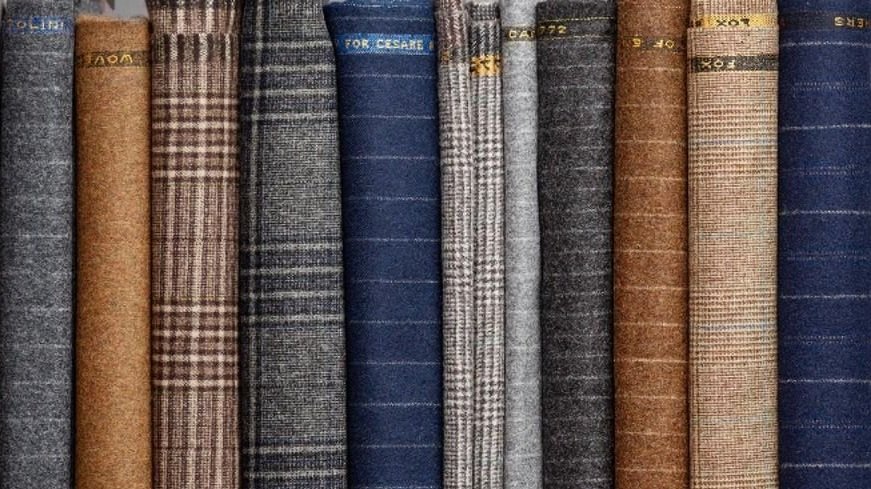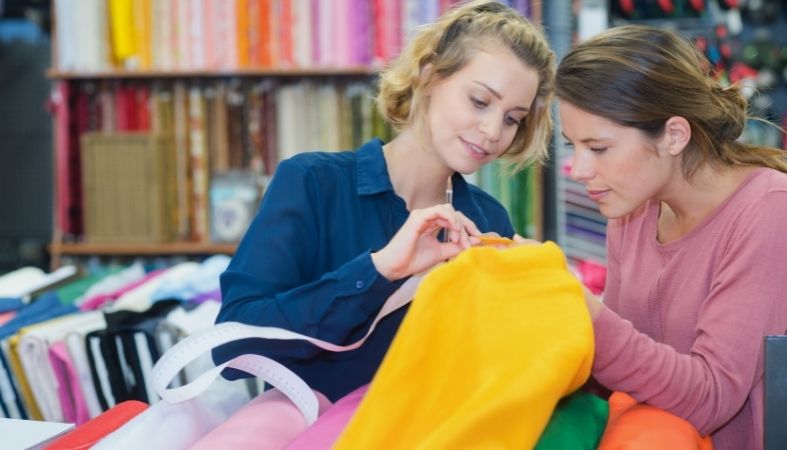The Ultimate Guide To All 4 Way Stretch Fabrics
Table of ContentsAll 4 Way Stretch Fabrics Can Be Fun For EveryoneFascination About All 4 Way Stretch FabricsAbout All 4 Way Stretch FabricsThe Only Guide to All 4 Way Stretch FabricsThe Greatest Guide To All 4 Way Stretch FabricsAll 4 Way Stretch Fabrics Can Be Fun For EveryoneThe smart Trick of All 4 Way Stretch Fabrics That Nobody is Talking About
As I additionally want UV protection from my garments when I head out, I would certainly choose a densely woven cotton material. Also the underclothing is much better in cotton (No spandex bands anywhere near the skin). Take a look at the most effective textiles suitable for making summertime garments. Another consideration when getting the textile is the means it will after washing.A safe bet would be to buy at least 10% extra textile. If you can acquire preshrunk textile, this is the ideal. Preshrunk textile will certainly have labels that will say" etc. If you are trying to find a textile that will certainly not extend or shed shape, you can search for the "anti-sag" label.

If you are matching the color, like choosing the lining for the primary material or picking textile to include as trim, this is especially essential. The fabric showrooms will normally have a light well where you can see the material in sunshine (or a window with excellent light from outdoors).
Not known Factual Statements About All 4 Way Stretch Fabrics

Most materials are about 44 vast. When you go to get material, estimate just how a lot you want first and then go to the shop.
These are readily available in the shops I regular as cut pieces they are mostly treasured low and several of them, when they are last off the bolt, valued really low. You will certainly need to ask the sales representatives for items like that. Some excellent bargains can be had in this manner. In dressmaking, we acquire fabric by the yard/meter.
9 Simple Techniques For All 4 Way Stretch Fabrics
In a quarter of a backyard, you obtain a 9 by 44 strip of textile, which has to do with 22 cm in length. It is always better to purchase broader fabric. According to the size of textiles, they might be called single-width and double-width. Single size is usually up to 49 inches in width and double width up to 60.
You can discover more concerning backyard to meter conversion below. Look into this article on reviewing a measuring tape Select materials that are not as well tough or inflexible, or you wouldn't fit in them. Linen, Jeans, flannel, For chillier climates, select woollen (100% along with woollen blends) wool tweeds, wool crepe; it basically depends on what pants you are speaking about Tailored trousers, Unstructured Pant, Combined, Denim.
All cotton materials are good for kids. Knit fabrics are likewise wonderful for kids you can go for wool knits.
All about All 4 Way Stretch Fabrics
Look into this post on the best textile for clothing for infants and youngsters for even more information on this topic. Light-weight cotton is my favorite to sew skirts. Cotton yard cloth in beautiful prints is terrific. Silk jacket is a great material for sewing skirts, as is Ponte Roma weaved fabric.
Drapey rayons, soft wool, lycra blends, and stretch velours are all ideal for stitching skirts. Wool (Wool crepe has a fantastic drape and gives enough framework for coats; wool tweeds are fantastic as well), Linen & Flannel. Raw silk, satin, taffeta, velour, Shoelace, silk chiffon, and Organza are all fantastic for making dresses.
You can buy medium-weight textiles with some spandex/elastane included for a fitting bodycon-type dress. For drapey outfits, you can select lightweight textiles. Jacket has a drapey fit such as this. Crepe, challis, and charmeuse are all drapey fabrics matched for this design. Take a look at these posts: Best textile for making laid-back dresses and tops; Names of various gowns. Rayon, Acetate, and cotton lining materials are famously utilized.
Lightweight cotton material, Cambric, Chintz, Twill, Faille, Seersucker, Poplin, light-weight woven broadcloth, batiste, bed linen, eyelet are good for making t-shirts and shirts. Smooth satin fabric is great for making ventilated tops. When acquiring patterned material (many of the formed textile comes with a width of 45 or 54 inches), there will be pattern repeat in these materials, and this need to be taken right into consideration when cutting material as well as purchasing them i.e., if you want to match the patterns at the seams.
An Unbiased View of All 4 Way Stretch Fabrics
This article has the names of all the checkered patterns and this, red stripe patterns. The themes will certainly be distributed in an organized fashion on the fabric. But you may discover sometimes If the print is not positioned on the fabric appropriately, it can not be matched or aligned when built without distorting the fabric and the hang of the garment.


You can find out more concerning grain and grainline of textile below. The textile weight is reliant on several variables like the weave, fiber kind, and so on and is commonly denoted by GSM. GSM can differ from 60 -700; 700 being the GSM of extremely top quality woolen textile. A denim textile has a GSM of 400, depending on the weave.
One thing you have to maintain in mind is that greater textile weight does not represent higher fabric high quality. It simply is an indicator of the viability of the textile for a certain project. You can pass by high material weight textile jeans for a light-weight floating shawl. Knowing the material weight works when contrasting the very same sort of fabrics, but even this will depend on its application.
In a nutshell, the most crucial requirements to look for in the fabric you buy are as adheres to (https://www.bitchute.com/channel/Lx4AVpwZGKJq). The number of strings per inch of fabric (yarns-per-inch).
The Definitive Guide to All 4 Way Stretch Fabrics
In top notch fabric, this balance (either in numbers or in size) will certainly always be preserved. Procedures made use of on textile to boost appearance and performance.
A two-ply thread transcends Full Report to a single-ply yarn.
If you are preparing yourself to begin a brand-new embroidery task, picking a textile will certainly be one of the most vital action when you choose what you intend to make. After you've gone to all the trouble and expenditure of acquiring the stitching maker you like, a pattern you love, and a textile you enjoy, you desire the completed product to be a success, right? One means to complete that is to start by making sure your textile is genuinely ideal for the job.
All 4 Way Stretch Fabrics - An Overview
If you're making a quilt, you'll instantly want to utilize quilter's weight cotton for ideal results. What if you desire to make an item of garments? How do you understand which textile will give you the very best outcome? Picking a material merely because you like the print or layout on it isn't necessarily the most effective technique.
In order to stay clear of doing a whole job for essentially nothing, we've compiled some pointers to aid you determine which textile is ideal for your task. Let's claim you currently have a task in mind; exactly how do you locate the appropriate fabric for it?
Then, assume of the characteristics you want the completed product to have. If apparel, will it be fitted or loosened? Dressy or everyday? For cozy weather condition or cold? Do you want a strong shade or a print? If you are making a non-wearable product such as a pillow cover or pot holder, use a durable fabric such as canvas.
There is so much information around about textiles, their attributes, and their uses, it could get to be frustrating! Do not try to take it in all at once; simply begin with the job at hand. Learn all you can about the textile you utilize for this set job.